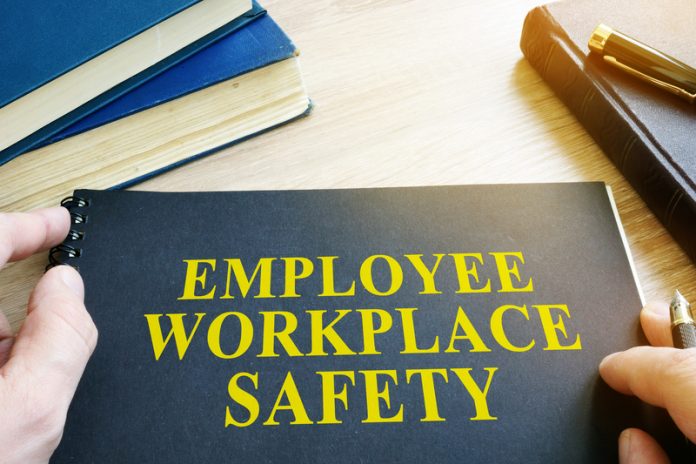A key part of any business’s journey towards ensuring safety excellence, behavioural safety is a proactive method for preventing hazards from escalating into incidents and injuries. If implemented well, it is known to produce a return on investment of around €1.5m, per 100 employees, per year.
Successful behavioural safety processes use targeted behavioural checklists and trained observers to monitor ongoing safety behaviour to reduce incidents, and identify hazards and system faults. A good process also focuses on the underlying contributors that trigger unsafe behaviour: these can be addressed to help streamline existing business processes to reduce incident potentials.
If you are thinking of implementing a behavioural safety process in your company, the over-riding question is:
Will it work for you? Although the promise of injury reductions and significant cost savings through behavioural safety is not an empty one, your company has to be ready to roll it out, as well as support and sustain it over a long period of time. This will take time and effort from all those involved, as well as having the right foundations in place.
Being ready for behavioural safety means being ready and willing to do whatever it takes to make it work in the face of obstacles and setbacks. To ensure that your company has the necessary building blocks and ‘appetite for behavioural safety, it is a good idea to conduct a formal readiness assessment to identify strengths that will facilitate the process, and identify any areas of opportunity to help build a solid foundation for the introduction of your behavioural safety process. In broad brushstrokes, the basic foundations for a successful behavioural safety process include:
Proactive Safety Leadership
The entire company leadership must actively want to prevent injuries. It’s helpful if top executives have articulated a clear and inspiring vision that ‘safe production’ is the only acceptable goal, and line-managers pro-actively enact and reinforce this vision on a daily basis.
Workforce Involvement
Employees must want to prevent injuries. They must also want to be involved in the behavioural safety process by participating in the design, development, and execution of the process, and be motivated to do whatever it takes to make the process work.
Time
Time is one of the most precious commodities in any company. Companies ready for behavioural safety recognise that spending time on behavioural safety is a sound investment, and are willing to cater to people’s time to make it work. The time spent includes training project teams, safety leaders, and observers, as well as putting time aside for developing the process, daily observations, and a half-hour weekly feedback meetings.
Resource Availability
Every behavioural safety process identifies various corrective and preventative actions (CAPA) that need attention. The company must be willing to address these in a timely manner to reduce the number of physical hazards and management system faults. This will take dedicated budgetary and system resources.
Assessment Processes
There are a number of ways that a company can assess whether or not it is ready for a behavioural safety process, such as data-mining and safety culture assessments.
Data-mining
The start point for an assessment should be data-mining to extract hidden patterns from incident databases. The vast majority of safety professionals look at the frequency of particular incident types, but not all try to look beneath the surface of their entire data set. Data-mining is a method to make better use of existing data by sorting through to identify patterns and establish relationships. In this way, the data can be used to predict future behaviour. It is useful to identify whether or not the company actually has a ‘behavioural’ problem; this is usually determined by examining incident databases to identify if the majority of incidents are being triggered by people’s unsafe behaviour. If so, the questions are asked about how frequently particular types of behaviour are involved, what is triggering these behaviours, under what conditions are they exhibited, and how many are potential Serious Injuries or Fatalities (SIF’s). An in-depth examination leads to the identification of the root causes, which can then be fixed through corrective or preventative actions. Sometimes, such behaviours are purely down to the choices made by people to make their work easier in some way, and as such highlights a motivational issue which signals that a behavioural safety approach is warranted.
Seeking Peoples Views
It is important to seek people’s views about safety to help ensure the behavioural safety process is optimally designed and will be well received. Employee input from a wide range of staff allows you to identify strengths and weaknesses in the way safety is currently being managed in many business units, and develop specific ways forward for each which will support implementation.
Focus-Group Exercises
Because we know that people’s safety behaviour is driven by the current safety culture, it is often useful to determine how mature a facility’s safety culture actually is, and the impact it is having on people’s safety behaviour. Systematically brainstorming the issues leading to unsafe behaviour is also a useful way to proceed. This usually involves the use of structured tools such as the Cultural Web to facilitate discussions.
Working in groups of five or so, delegates use the Cultural Web to highlight the current status of the company’s safety systems, processes, and behaviours in terms of:
- What is done routinely in safety to keep people safe?
- What rituals are in place to emphasize the importance of safety?
- What is the reputation of the current approach to safety?
- What symbols are used to publicise and reinforce safety?
- How are decisions made about safety issues?
- What structures are in place to support safety?
- What controls/Key Performance Indicators (KPIs) are in place to sustain safety?
The Cultural Web exercise initially examines what HSE processes and systems are working well, and what is not working. This is followed by identifying the changes personnel would like to see to improve performance. Ultimately, delegates use the results of their deliberations to produce a concrete action plan that has a broad consensus of all stakeholders.
Laying a solid foundation for change, these focus-group exercises provide a structured, interactive method for discovering the status of the current safety systems, processes, and people’s safety-related behaviours. This allows the company to discover ‘what is’ and ‘what could be’ so as to develop the way forward. Because many of the subsequent action plans are developed and owned by company personnel, the likelihood of successful safety culture change is that much greater, as people are more willing to follow through on a process they have helped to create.
Safety Culture Surveys
Useful diagnostic tools, safety culture surveys help companies develop highly focused, cost-effective safety improvement initiatives, and are one of the quickest ways to gain the most information about employees’ perceptions of the current culture.
Typically, the survey questions will inquire about the main characteristics of a strong safety culture such as:
- The visibility of safety leadership
- Safety being a clearly recognised value
- Whether a safety partnership has been established
- People’s accountability for safety being clear Safety being fully integrated into all business activities
- Safety being driven by lessons learned.
Providing an indicator of the overall maturity of a company’s safety culture, these surveys are used to measure the effectiveness of current safety improvement initiatives, and their impact on people’s behaviour. Usually distributed to personnel online, the responses are analysed to identify strengths and areas of opportunity to develop the way forward. The results are also used to benchmark the results against other companies making use of safety culture maturity models such as that shown in the chart on the previous page.
Conclusion
It is not always easy to introduce a behavioural safety process into a company, as many issues that could delay progress may not have been identified and addressed. The advantage of doing a Readiness Assessment is that it helps you to examine whether people’s behaviour really is a problem, and if so, how people view your current safety efforts. This allows any issues that may block the introduction of a successful process to be identified and addressed before starting, which increases the likelihood of success.
Dr Dominic Cooper CFIOSH CPsychol
CEO
BSMS Inc.
Tel: +1 (317) 736 8980
US: info@bsms-inc.com
EU: dominic.cooper@nordnet.fr

























